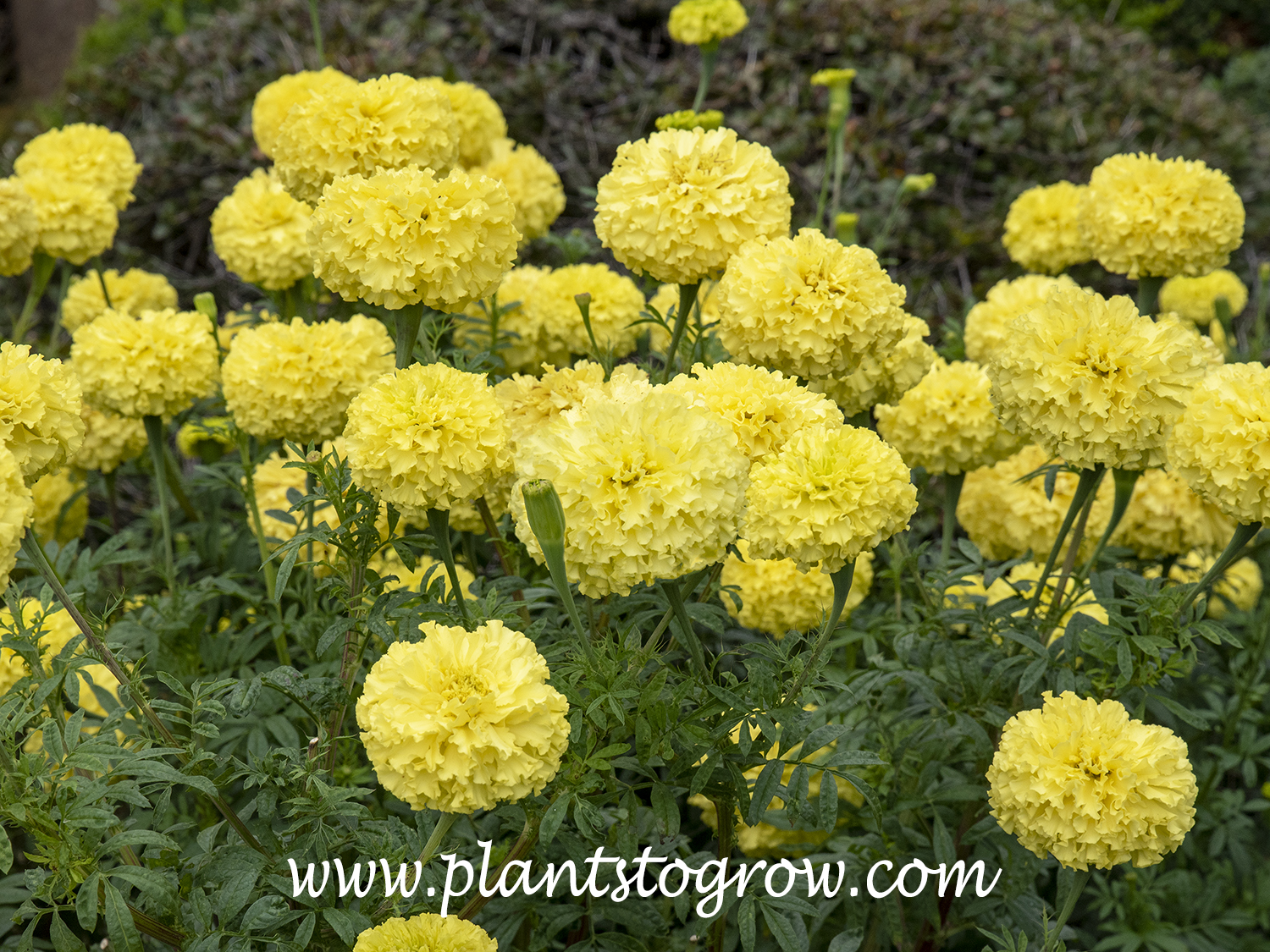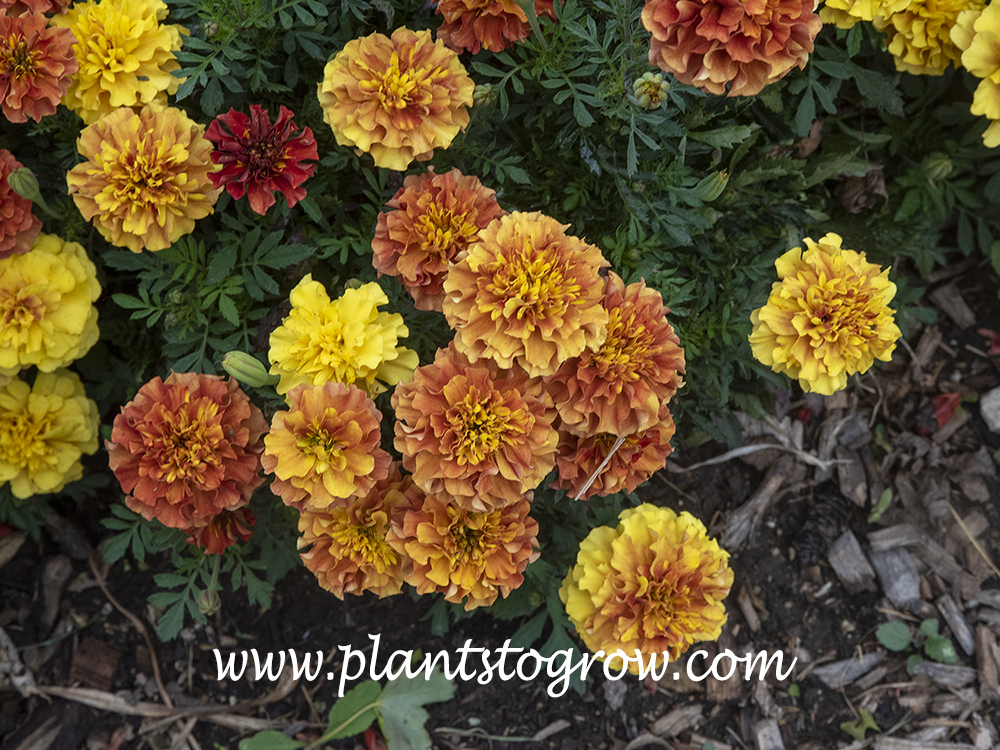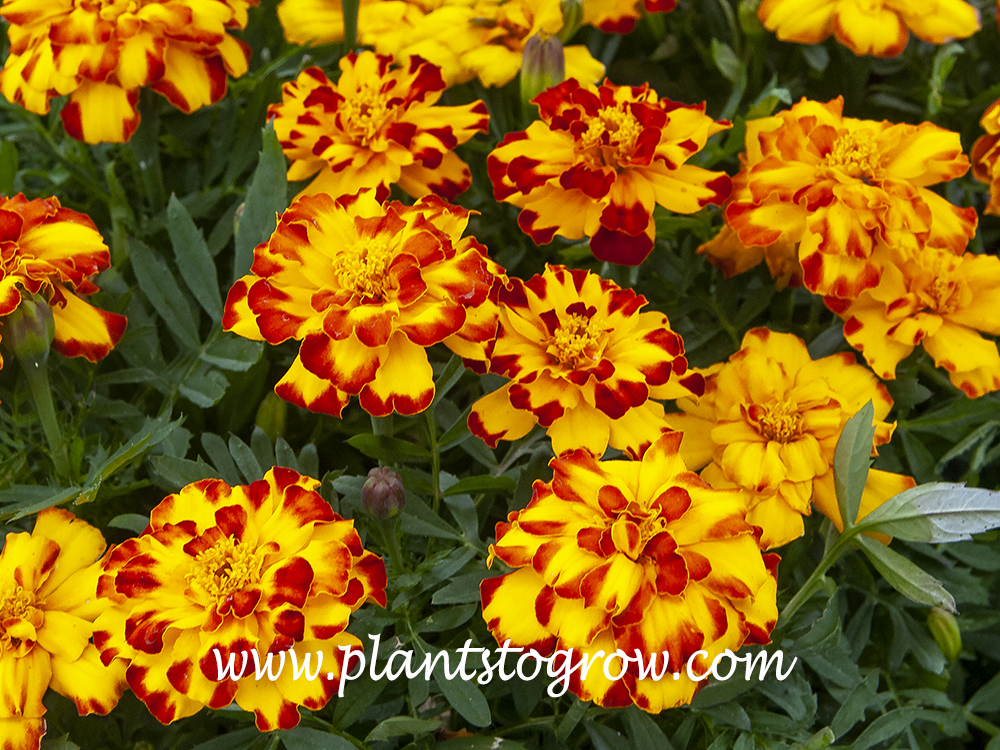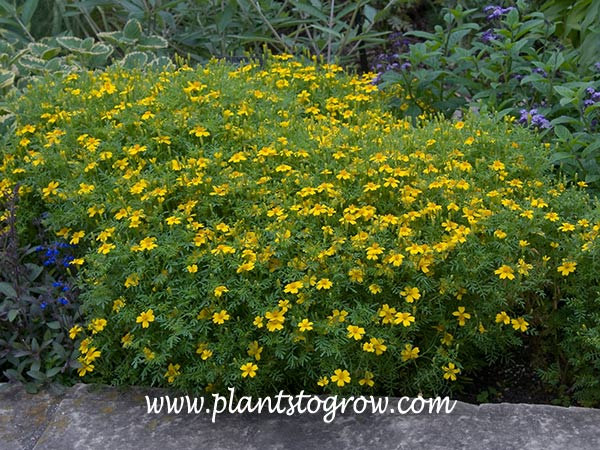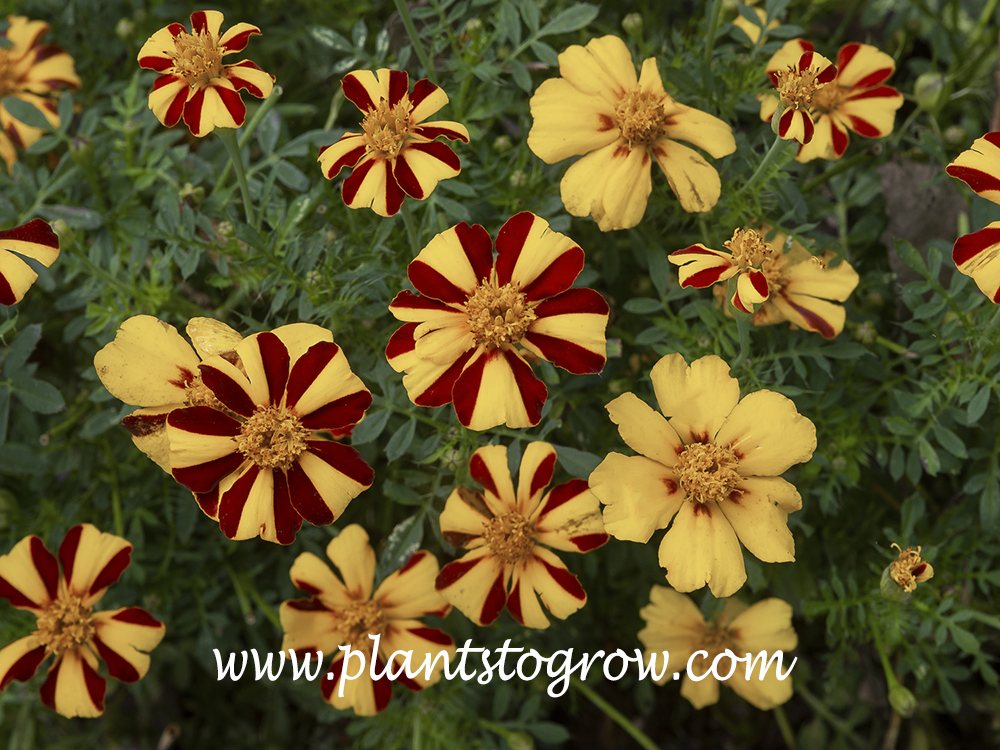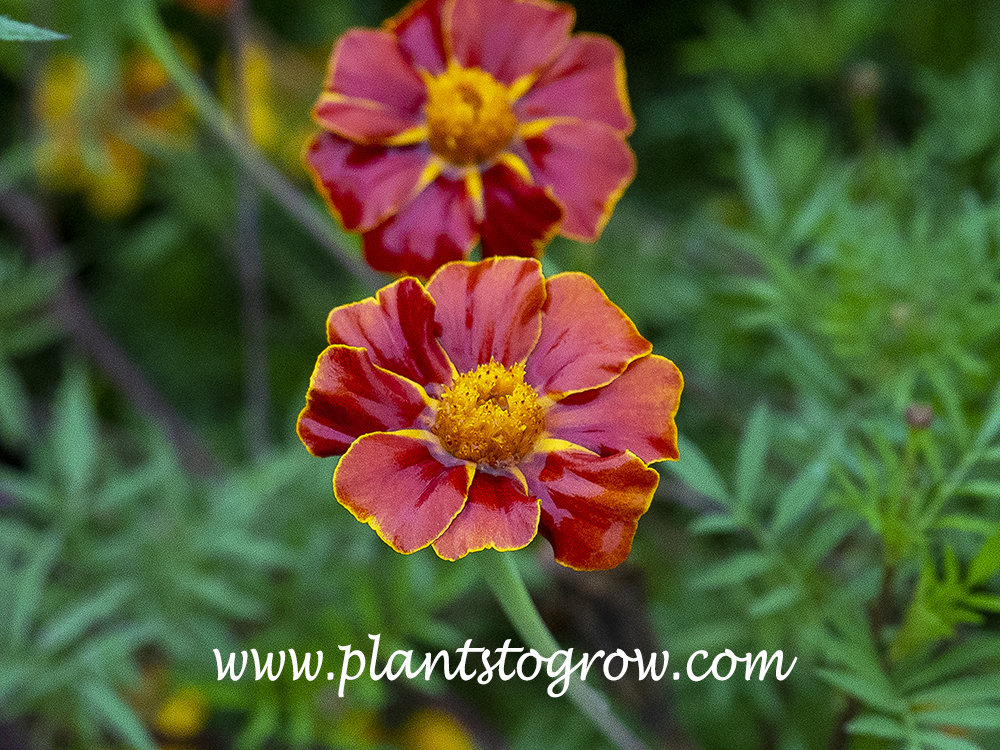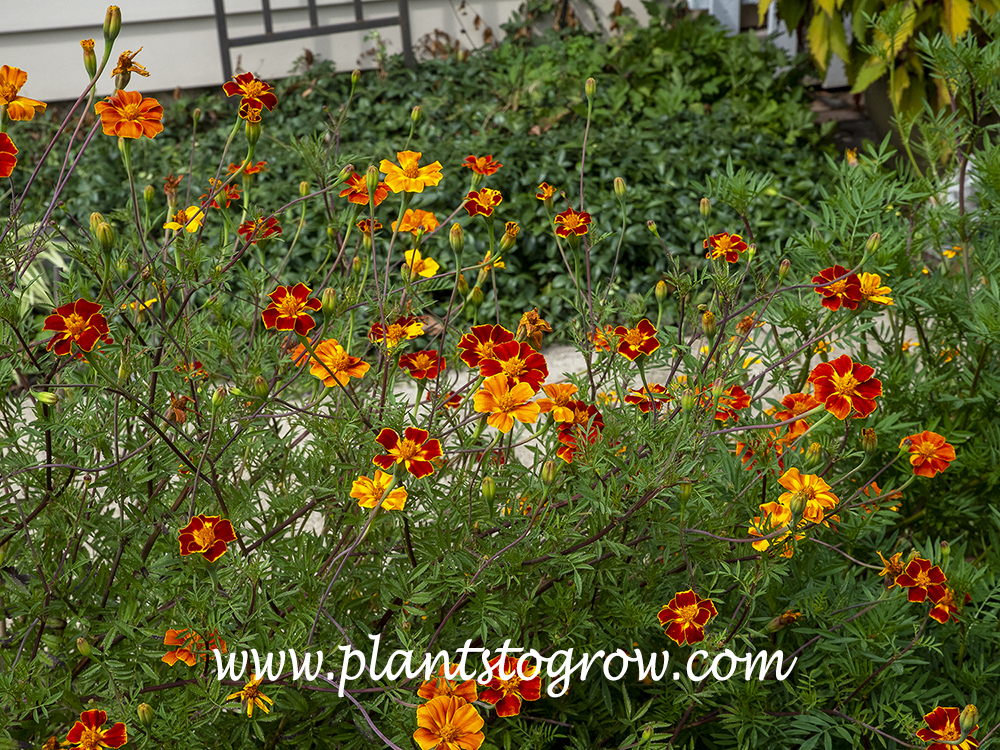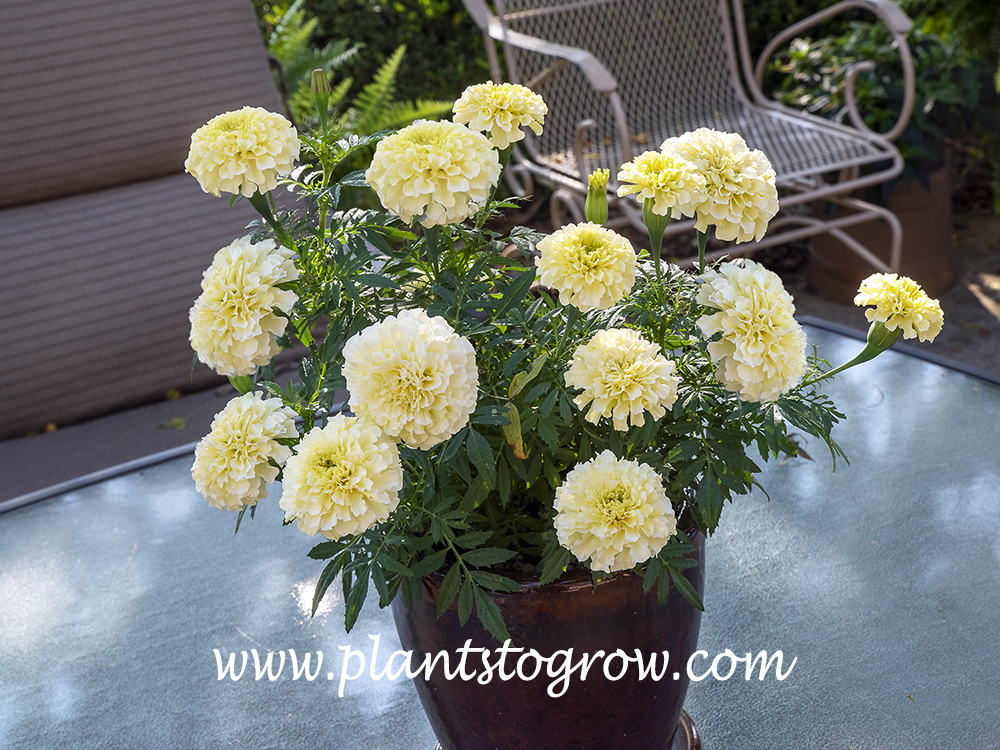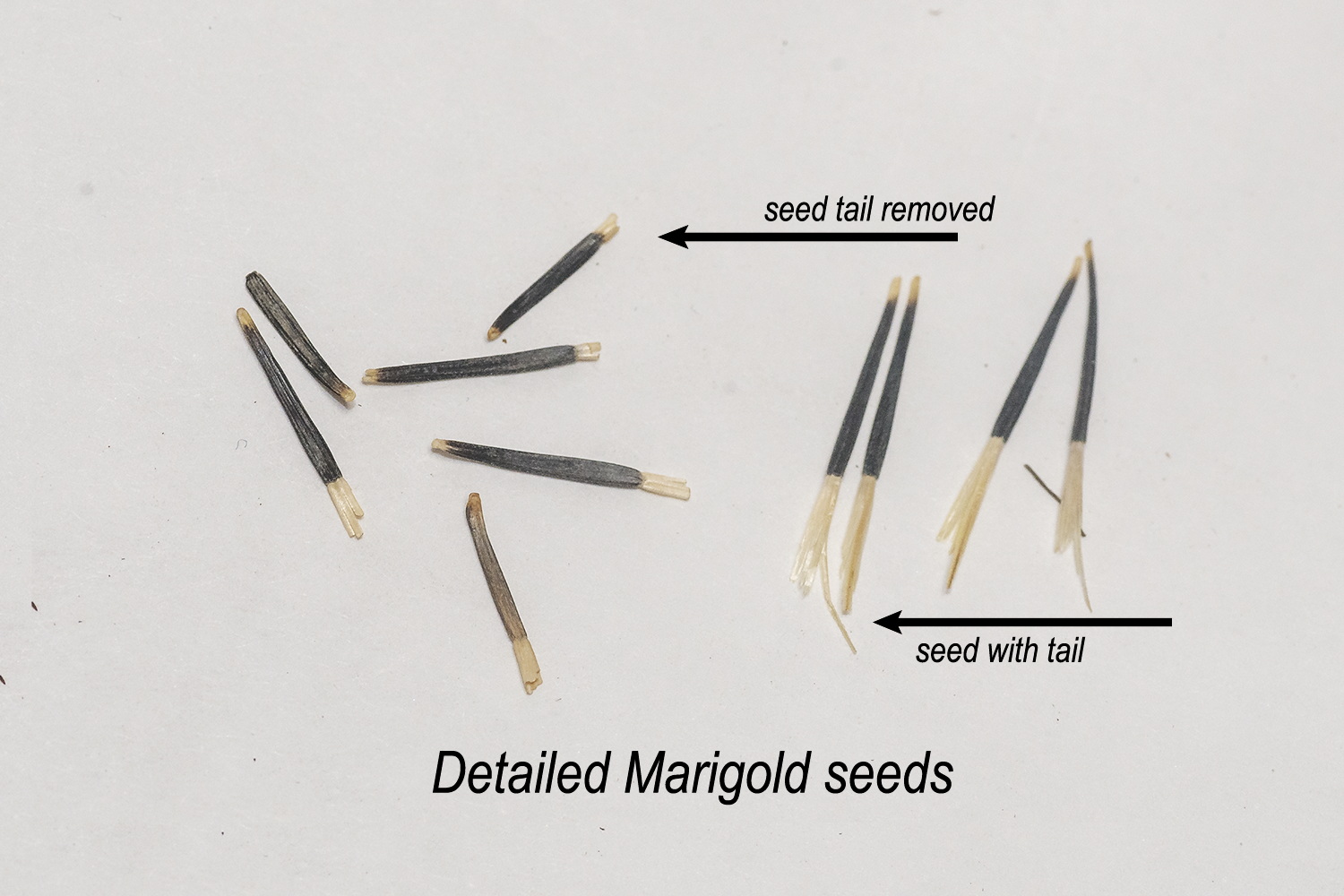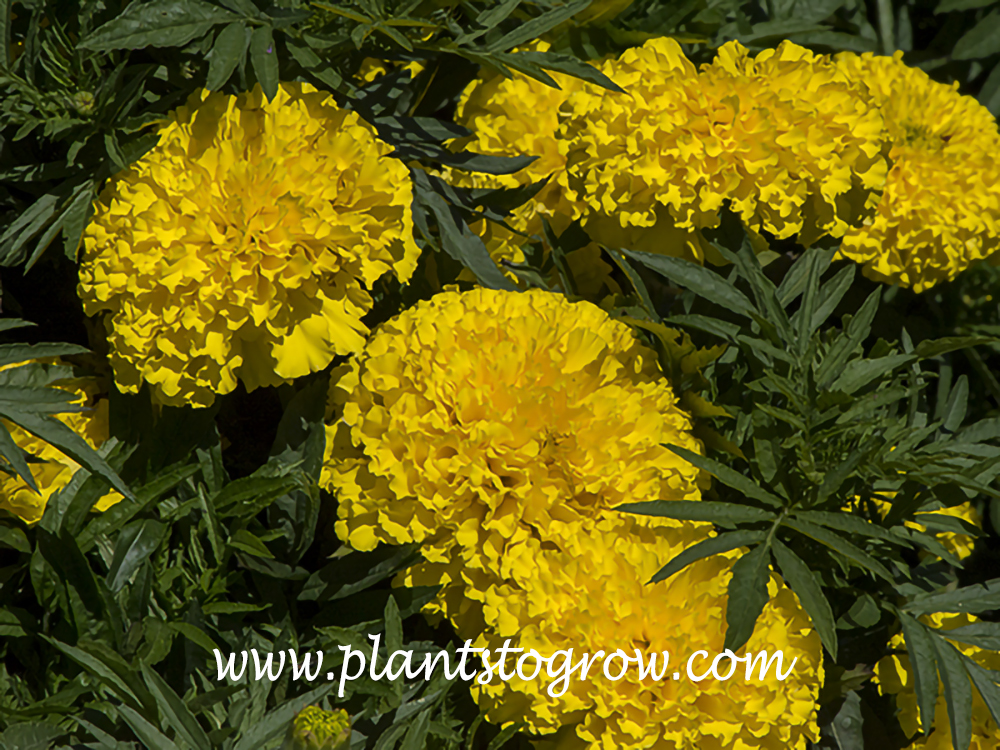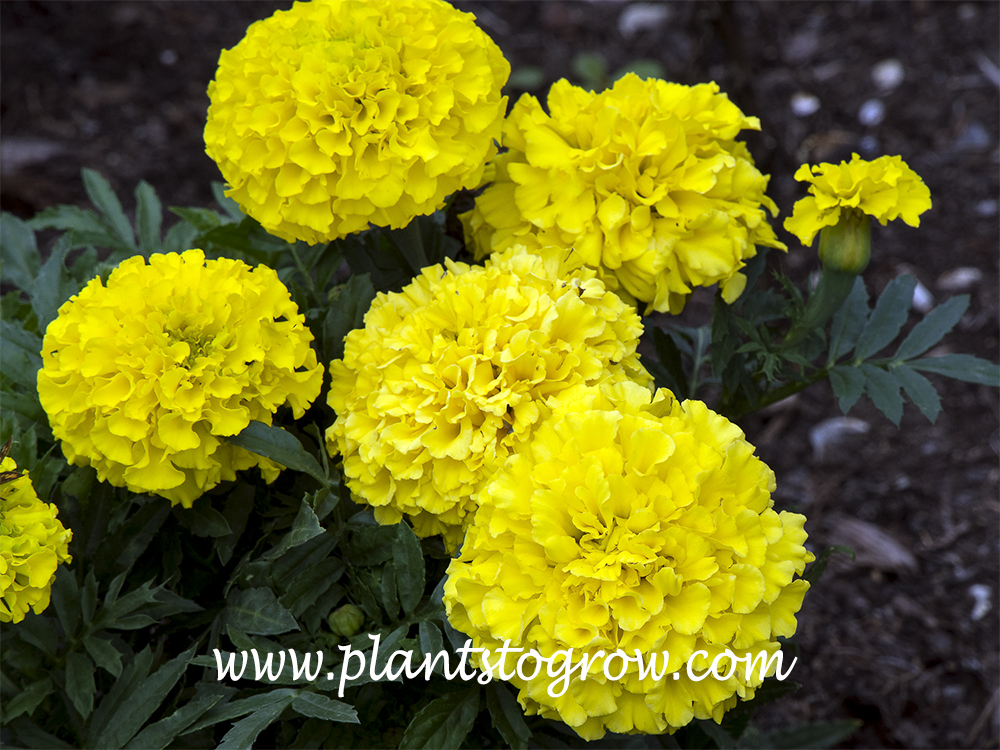| Description | Marigolds (Tagetes) Since they are common and have a bit of a smell many gardeners give Marigolds a bum rap. Overall, these are one of the easiest and most versatile of garden annuals. Enter this section for some general cultural information on Marigolds. |
|---|---|
| Plant Type | Annuals, Site author's observations |
| Sunlight | prefer full sun, will tolerate some shade |
| Moisture | average |
| Soil & Site | average |
| Flowers | The flowers come in a wide range of colors, sizes and forms. Colors are white, yellows, golds, oranges, mahogany and reds. Many cultivars have combinations of colors. Forms are single, crested, anemone and carnation types. Flowers as small as a nickel to as big as 4-5" across |
| Fruit | winged achenes |
| Leaves | has a faint smell to the foliage, has never bothered me |
| Roots | fibrous |
| Dimensions | The smallest marigolds are found in the French Dwarf cultivars. They are 6-8" to 14" tall and the largest are the African or American types that can tower over 3' tall. |
| Maintenance | Marigolds produce masses of flowers and deadheading helps to keep the plant looking neat and produces more blooms. Have reseeded for me. |
| Propagation | These are some of the easiest annuals to grow from seed. The seeds are like long grains of rice still in the seed husk. Marigold flowers readily set seeds, which can drop into the soil and germinate next year. The new seedlings probably will not be true to the original plant. These plants are hybrids and don't always come true from open-pollinated flowers. If possible, purchase detailed seeds which are easier to plant. |
| Native Site | Central America and Mexico. |
| Misc Facts | The name Tagetes (tay-gee'teez) from the name of Tages a grandson of Jupiter. Their recorded history goes back to the era of the Aztecs. In the 1500's seeds of Marigold were brought to Spain. The plant traveled to France to Africa to India. By the time of the revolutionary war, Marigolds were re-introduced to America. The major breakthrough for the ornamental value of this plant occurred in 1915 when the William Atlee Burpee Company invested money in the development of the plant. Most of the Marigold cultivars come from two species, T. erecta (African or American Marigold) and the T. patal (French Dwarf Marigold). Also some T. tenuifolia (Signet Marigold) are found. |
| Author's Notes | I have grown and planted many hundreds of Marigolds. Found them easy to grow and maintain. Supposedly rabbit proof??? I have seen a few "Bugs Bunnies" in my Marigold beds. |
| Notes & Reference | #27-Rodale's Annual Gardens (Paul Loewer) #28-Cottage Garden Annuals(Clive Lane), Horticulture July/August 1998 "Marigolds", Wayne Winterrowd |

Cart
